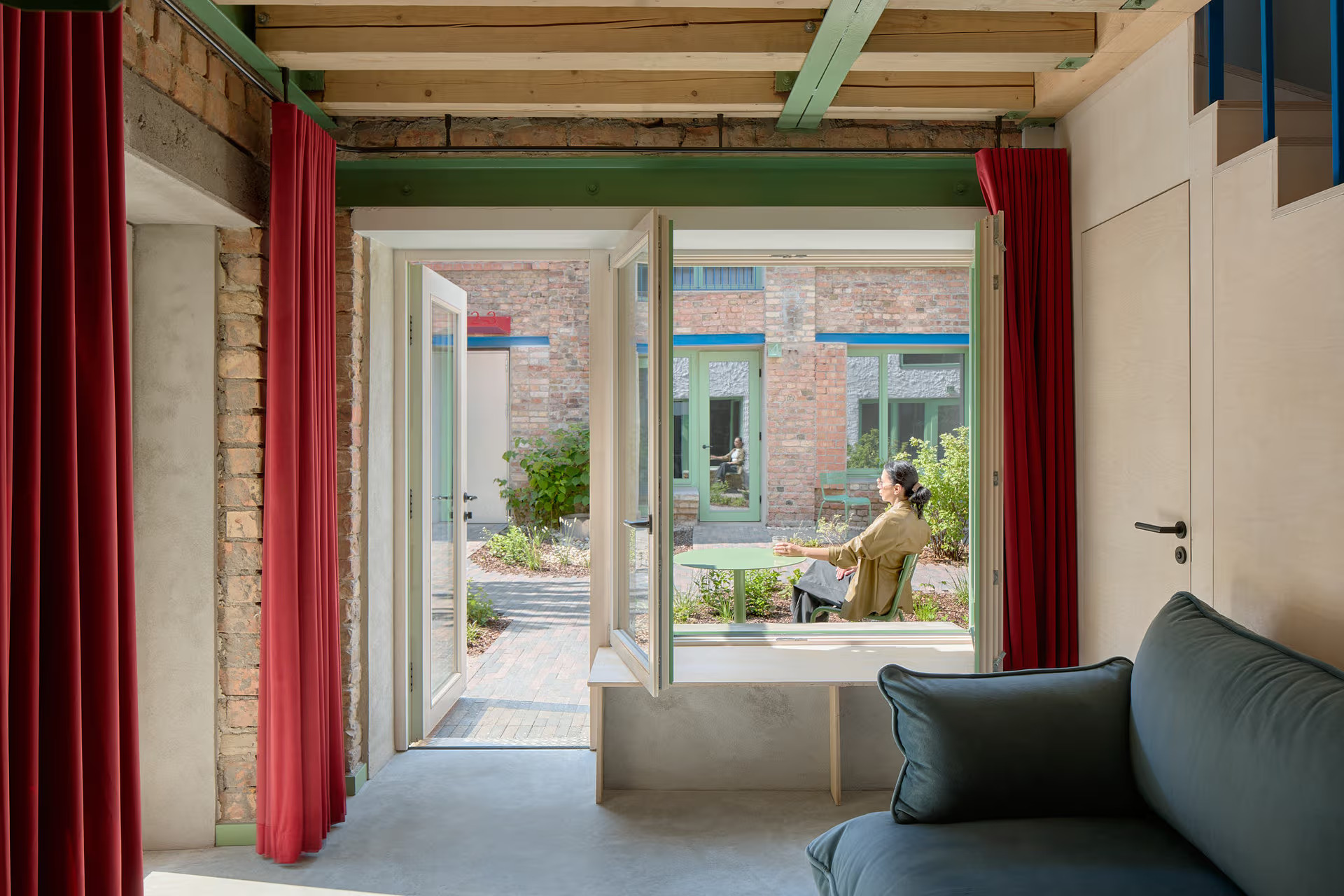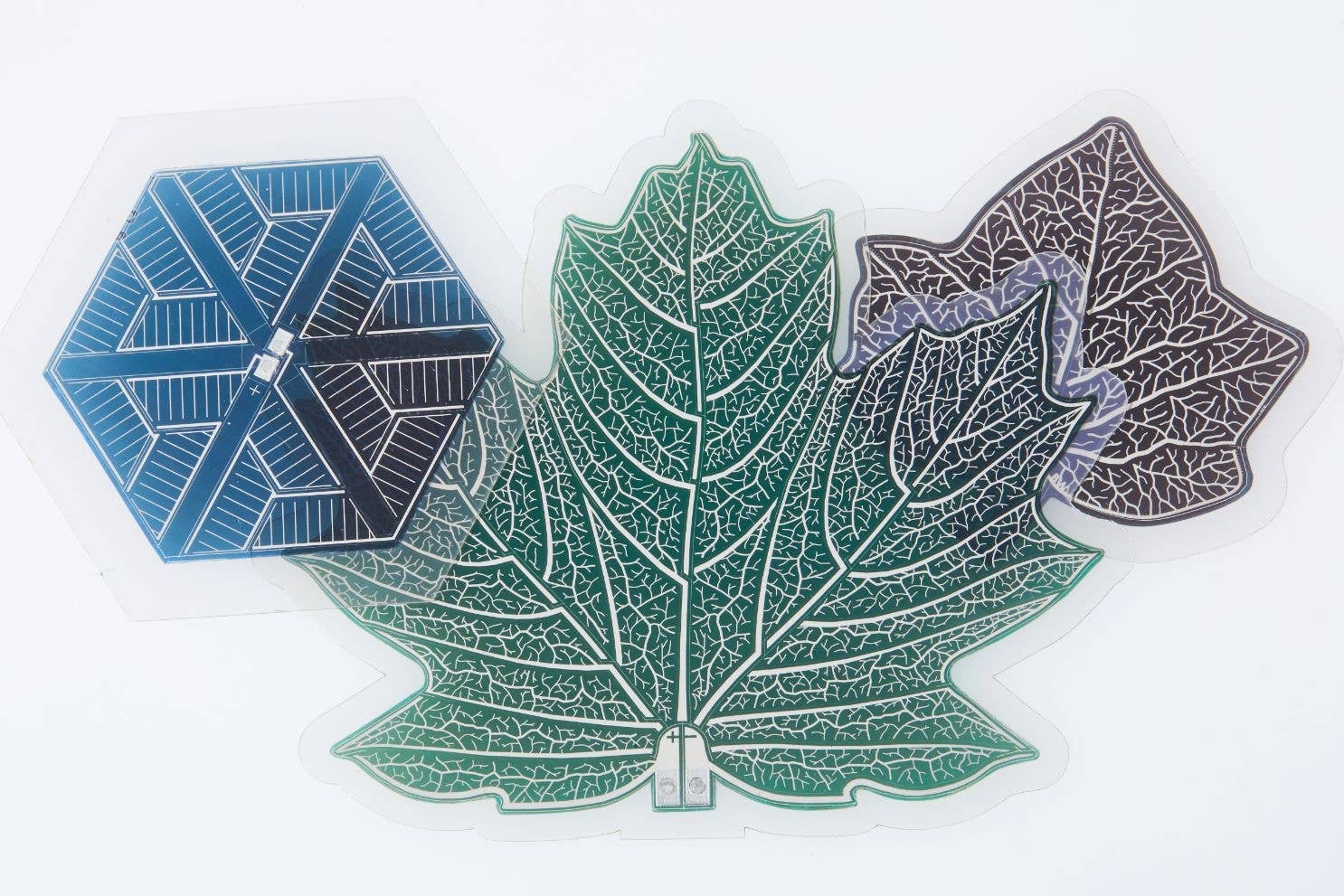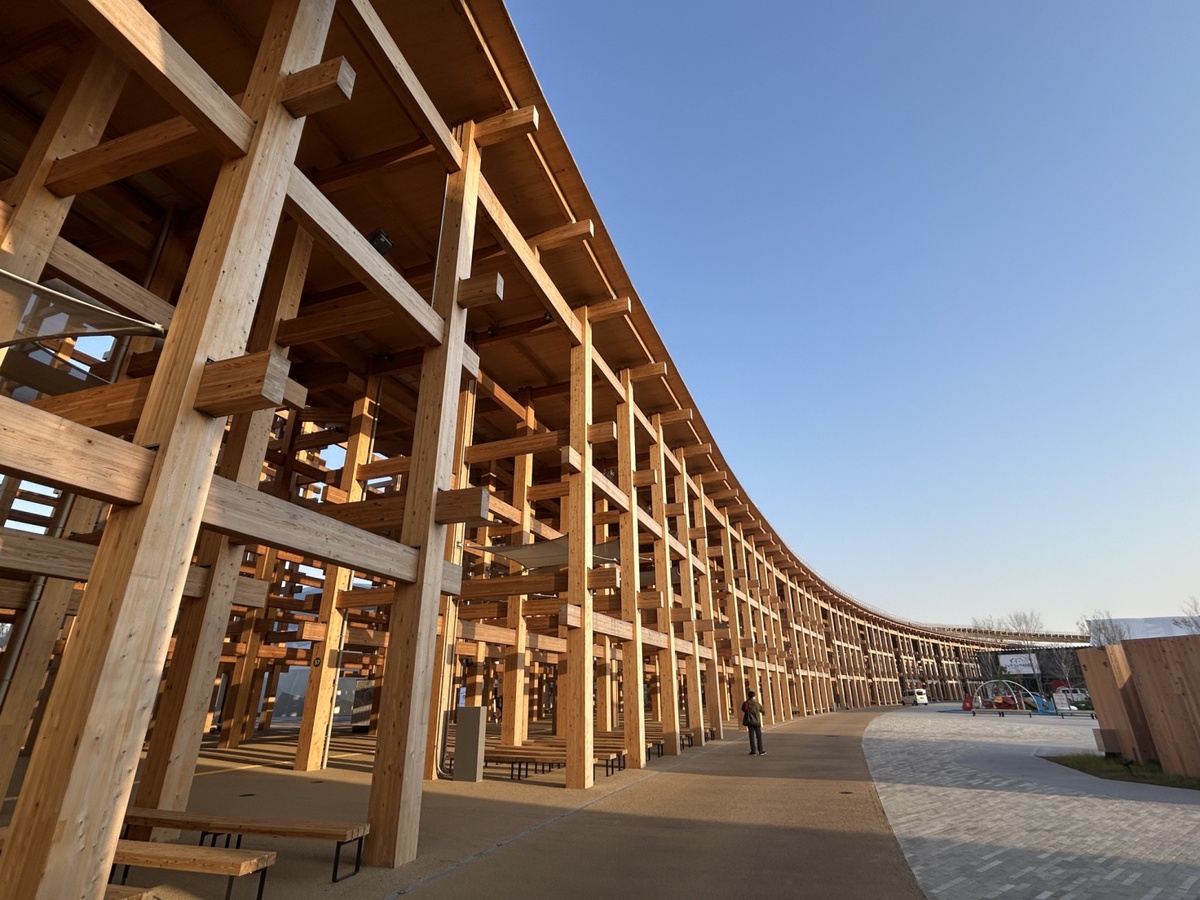
Building the Future: Materials and Techniques at Expo 2025 Osaka
As Expo 2025 Osaka prepares to close its doors on October 13th, its theme—“Designing Future Society for Our Lives”—has come to life not only in its exhibitions but also in the architecture itself. The event showcased an innovative blend of sustainable design, local craftsmanship, and forward-looking materials, reflecting a global commitment to adaptability, disassembly, and reuse in construction.
From expansive timber structures to high-tech membranes that cool without energy, the Expo presented a compelling vision of what architecture can be in a changing world.
The Grand Ring: The World’s Largest Wooden Structure
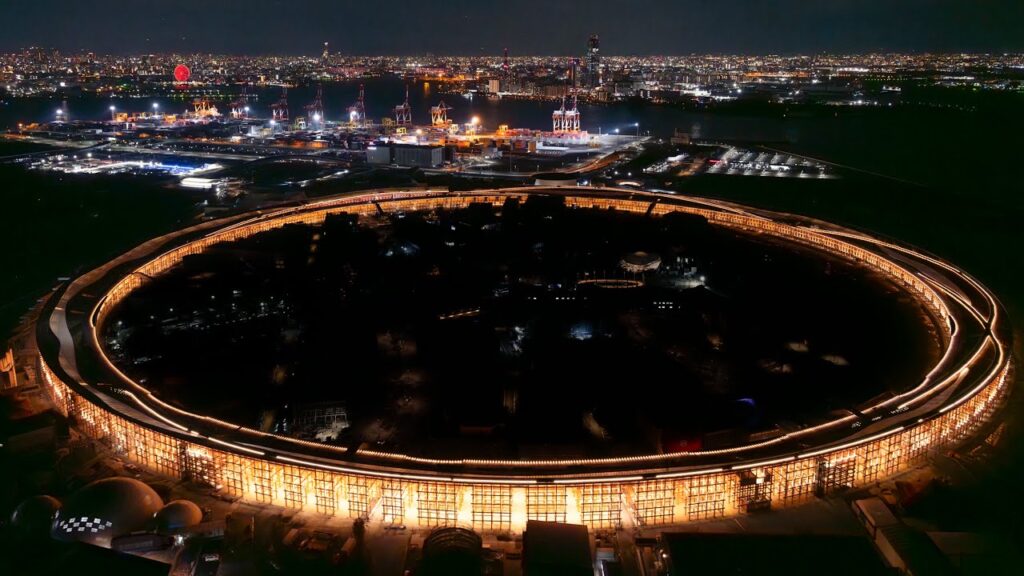
The centerpiece of the Expo is the Grand Ring, a monumental wooden structure that circles the site with a diameter of roughly 2 kilometers—making it the largest wooden structure ever built. Designed as both a practical circulation path and a symbolic gesture, the Grand Ring embodies the Expo’s theme of “Unity in Diversity.”
Constructed using a mix of modern engineering and traditional Japanese joinery, including Nuki joints historically used in temples and shrines, the ring seamlessly blends heritage with innovation. It is built primarily from domestic Japanese cedar and cypress, with a portion of imported Scots pine, up to 70% of local materials. The structure measures approximately 30 meters wide and reaches up to 20 meters in height at its highest point. It includes a skywalk, offering visitors an elevated, sheltered path around the site while protecting them from the elements.
Colombia Pavilion: Narrative-Driven Sustainable Design
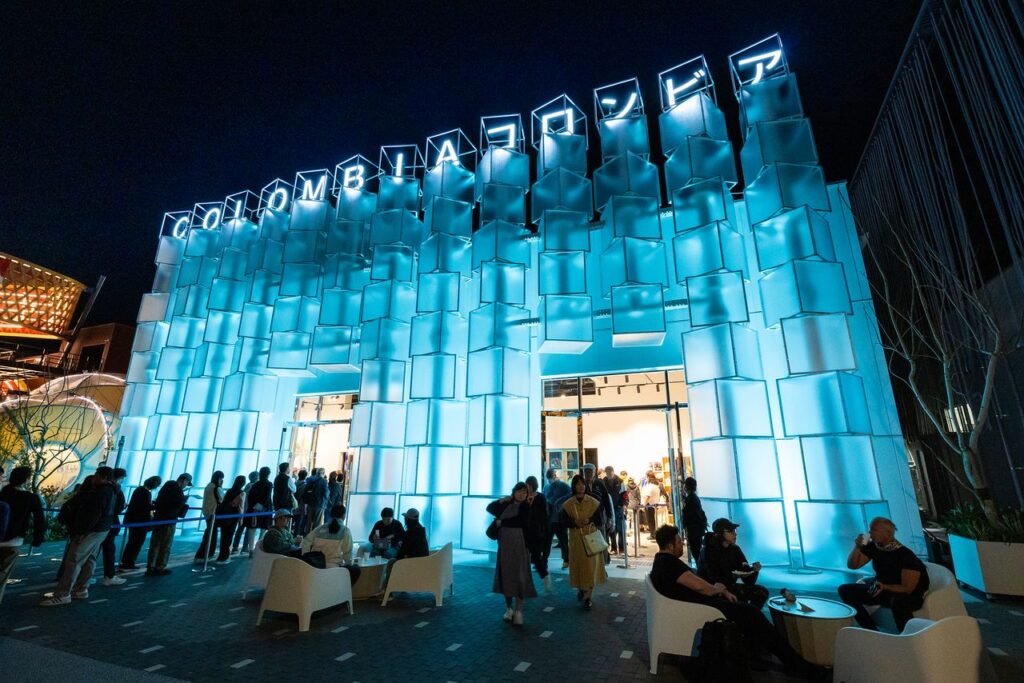
The Colombia Pavilion, designed by architecture studio MORF, stands out for its inventive blend of narrative-driven design and sustainable construction techniques. Inspired by the famous opening of Gabriel García Márquez’s “One Hundred Years of Solitude”—in which a child first encounters ice—the pavilion interprets this moment through a concept called “ICE CUBE.”
This theme is expressed in the building’s semi-transparent façade, composed of modular polycarbonate cubes oriented in different directions. The cubes feature programmable lighting, allowing the appearance of the pavilion to change throughout the day and night. The result is a flexible, visually dynamic structure that reflects both Colombia’s cultural richness and a commitment to low-impact, temporary architecture.
Gas Pavilion: Radiative Cooling Membrane Innovation
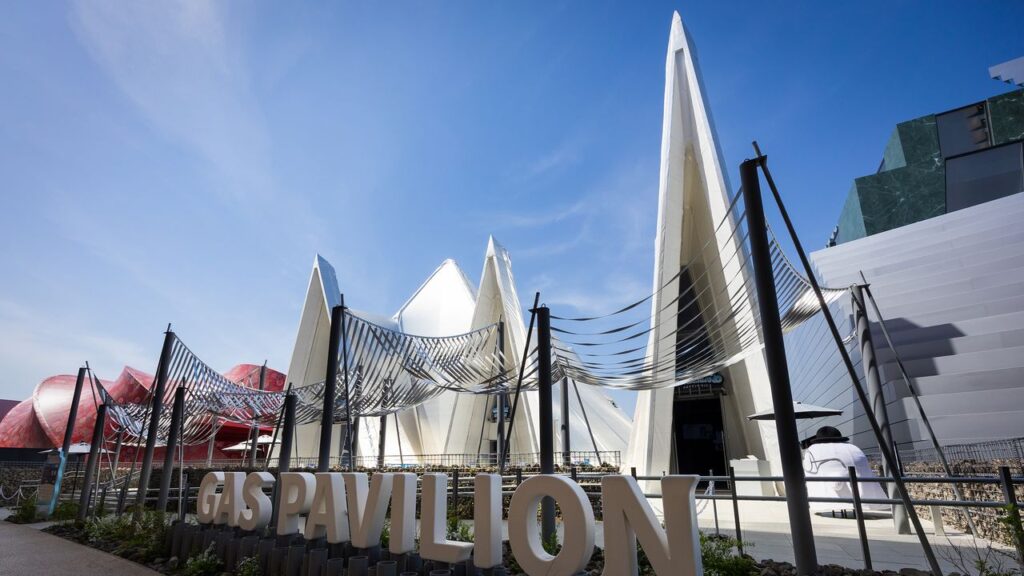
Among the Expo’s most technically advanced structures is the Gas Pavilion, sponsored by the Japan Gas Association. It is the first building in the world to incorporate a radiative cooling membrane—a groundbreaking material developed by Japanese startup SPACECOOL INC.
This innovative membrane reduces interior temperatures without consuming any energy, offering a sustainable alternative to traditional cooling systems. Architecturally, the pavilion is defined by dramatic triangular forms clad in reflective silver fabric. These surfaces shift in appearance due to the weather and time of day, giving to the building a constantly evolving, shimmering presence that symbolizes the future of energy-conscious design.
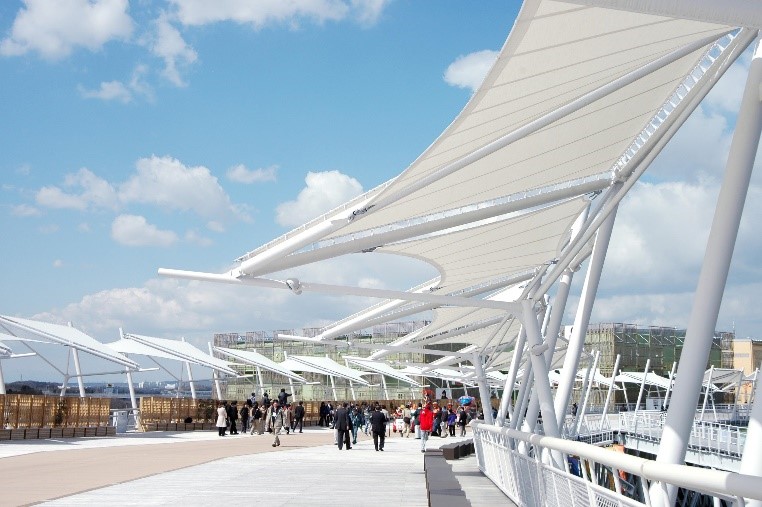
Expo 2025 Osaka reveals a clear trend in flexible, environmentally responsible architecture. Across the site, pavilions are constructed from natural, lightweight materials—wood, membranes, fabrics—using methods that emphasize ease of assembly, disassembly, and reuse. Many designs draw from local traditions, adapted to serve modern environmental and technological needs.
More than just a showcase of national and corporate pride, the Expo serves as a laboratory for future building practices—ones that value circularity, cultural identity, and climate resilience in equal measure.

